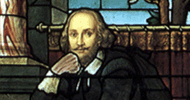

 |
 |
| Authorship | The Playhouse in Printing House | Publishers, Printers, and the Printed Book | ||||||||||||
| Publishers, Printers, and the Printed Book | |||
| Women in the Book Trade | ||
|
Although the trade in early modern printed plays was composed overwhelmingly of men, women were involved at various levels in the book trade. The wives of stationers, both printers and booksellers, often inherited their businesses after the husbands died. Most of these women remarried, and their new husbands would then take over the shop. But some women did not and ran the businesses on their own. One such woman was Elizabeth Allde, whose husband Edward Allde died in 1628. She assumed control of his print shop that year, continuing to print and publish works until her own death in 1636. Having women in the book trade was nothing new for the Allde family. Edward Allde's mother, Margaret Allde, also remained active as a bookseller after her husband John died in 1584, staying in business until around 1603. One book that Elizabeth Allde printed and published was Robert Greene's Friar Bacon and Friar Bongay-her husband had acquired the right to publish it in 1628-adding a woodcut to its title page. This woodcut was originally printed in the prose history of Friar Bacon in 1627 (STC 1183), a book she had reprinted for its publisher Francis Grove in 1629 (STC 1184). Women were active not only as stationers; some were authors. Before the Restoration, only one play by a woman was printed, Lady Elizabeth Cary's The Tragedy of Mariam, The Fair Queen of Jewry (1613). Its title page advertises the play as "Written by that learned, virtuous, and truly noble Ladie, E.C.," initials that help conceal the author's true identity. The play exists in two issues, one with a dedicatory poem and one without it. The dedicatory poem, "To Dianaes earthlie Deputesse, and my worthy Sister, Mistris Elizabeth Carey," explicitly names the author of the play and is signed by "E. C." (the author's sister-in-law, also named Elizabeth Cary). Most surviving copies of the play, however, lack this dedicatory poem, perhaps because it identified the play's author too clearly and was therefore removed, or because it was only intended for a few presentation copies of the book, copies that were given to close friends who already knew the author's identity. Aphra Behn was the most famous female author of the Restoration era, both for her plays and her novels. As a youth, in 1663-64, she visited Surinam with her family where she may have had an affair with William Scot, an antimonarchist fleeing from the Restoration government. When she returned to England, she married a merchant named Behn, in 1664, who died on year later, leaving her financially ruined and in need of employment. She started working as a spy in 1666 for Charles II in Antwerp, but when she returned to England in 1668, she was almost thrown in prison for debts she had incurred in service for the crown. The government did end up paying her, but thereafter she supported herself by writing plays for the professional stage, with her first play, The Forced Marriage, being performed in 1670. Until her death in 1689, Behn continued to write plays and novels, the most famous of which is Oroonoko; or, The Royal Slave (1688), the story of an African prince forced into slavery. Here is the title page to the second part of her All the Histories, Novels, and Translations (1700), a collected edition of her works. It also has a short biography of Behn, nine years before the first biography of Shakespeare would appear. |
Images: Columbia
Rare Book & Manuscript Library
Technology: Columbia Center for New
Media Teaching & Learning